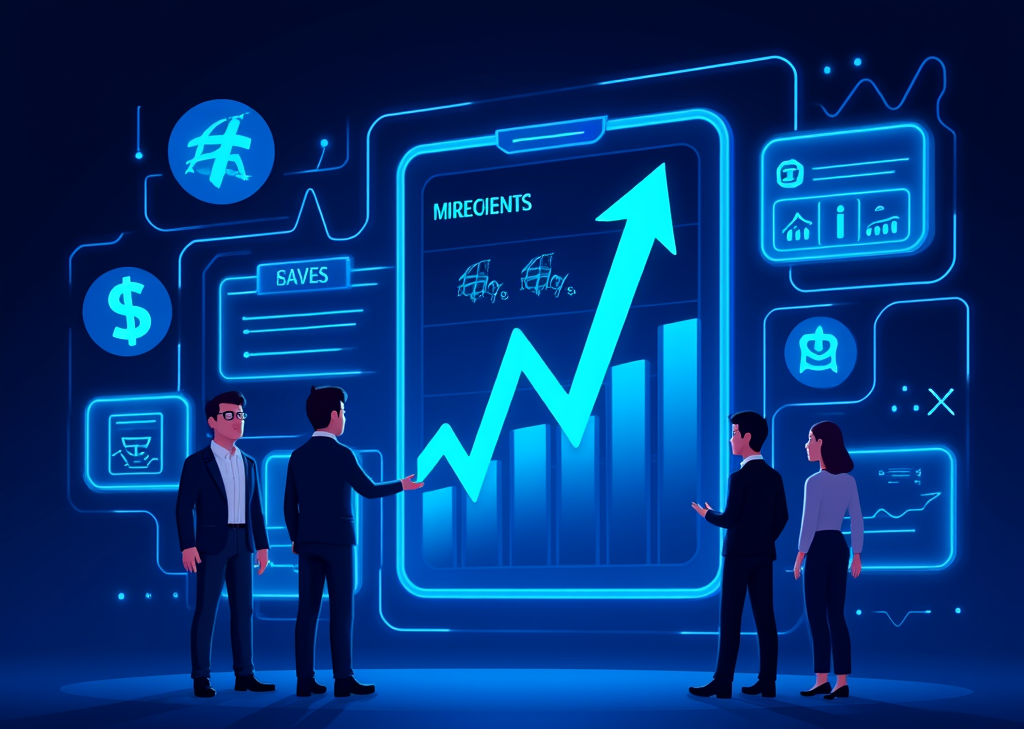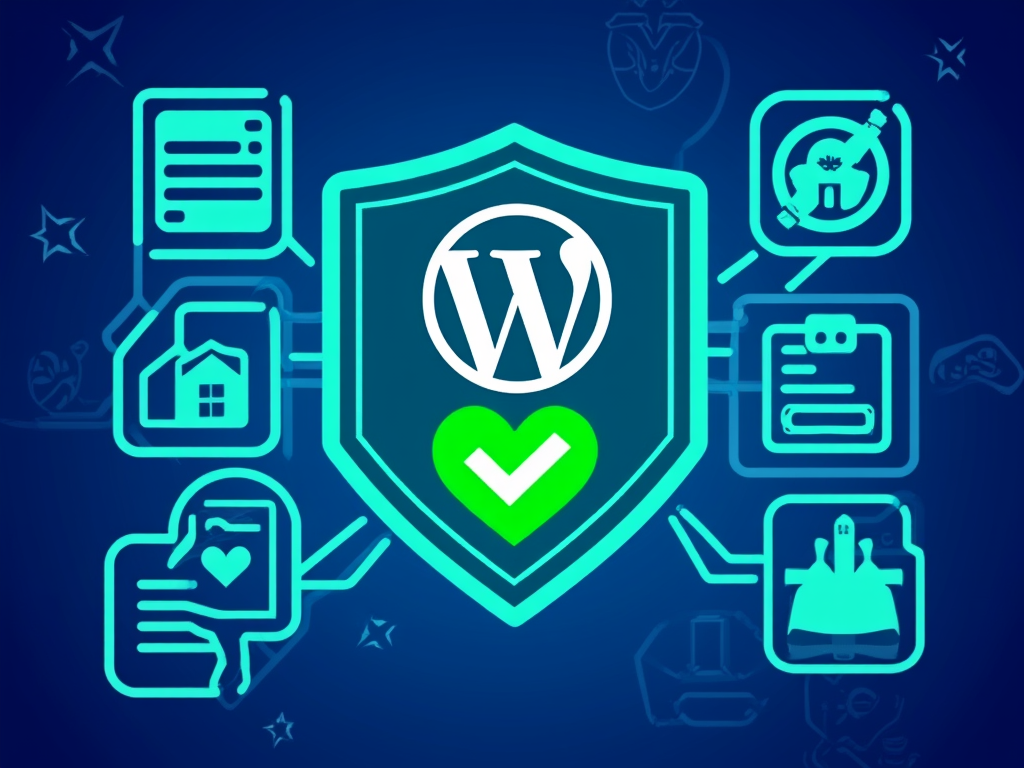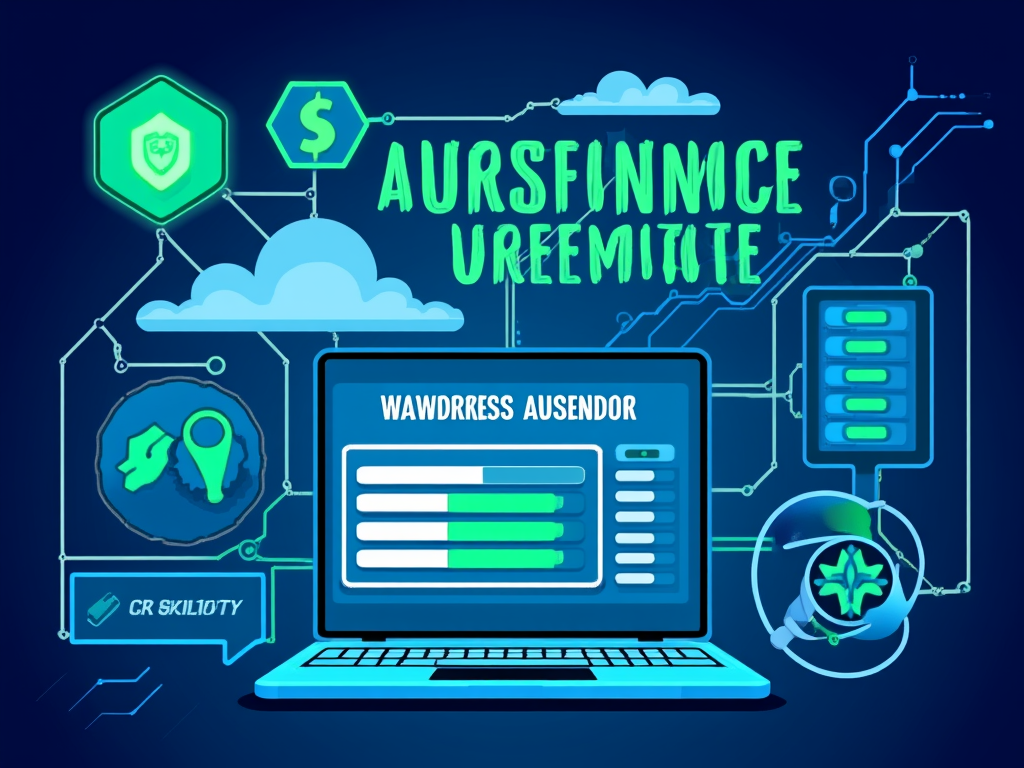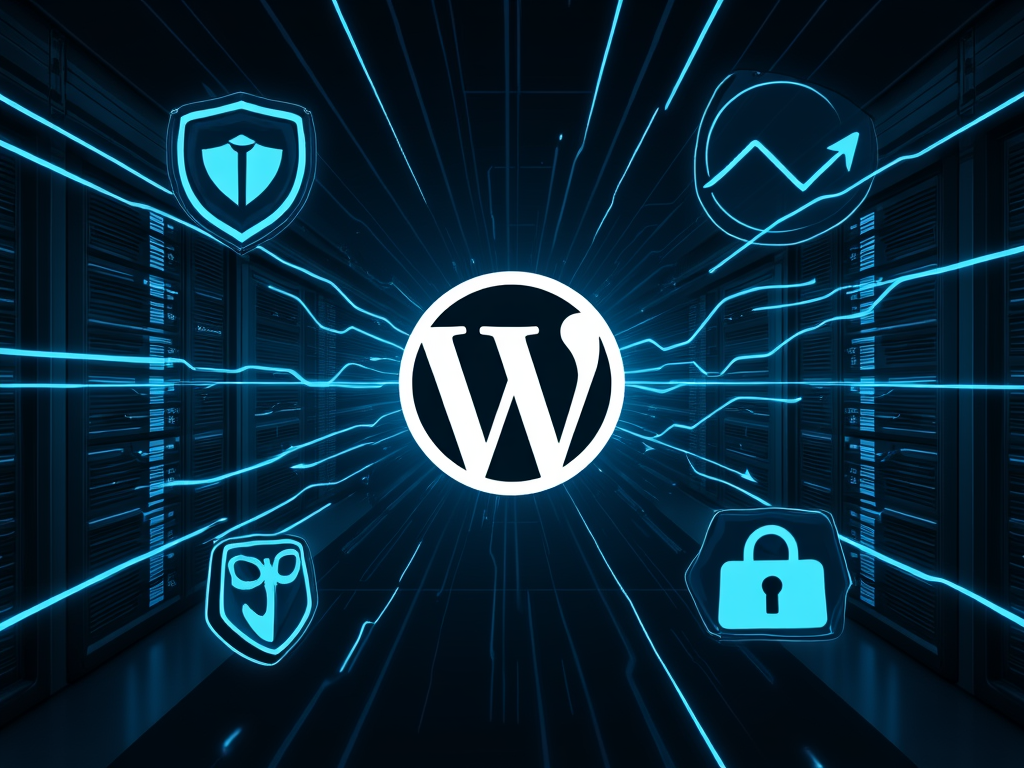WordPress for agencies: business insights
Introduction
The digital age is racing ahead, and at the forefront of this revolution is none other than WordPress. With its impressive 42% share of the global website market, it's clear that if your agency isn’t leveraging this platform, you might as well be steering a ship with no sail. For agencies that navigate this vast ocean, understanding the deeper currents of WordPress—the nitty-gritty operations, strategies, and customer dynamics—is crucial for not just survival but for thriving in an increasingly competitive environment.
WordPress isn’t just another tool; it’s a universe of possibilities. From stunning blogs to intricate eCommerce platforms, it offers a customizable, user-friendly interface that appeals to businesses across every sector. The rising trend of eCommerce integration through WooCommerce expands the horizon even further—creating a perfect storm of opportunity for agencies willing to engage.
However, this growth isn’t without its challenges. As WordPress agencies strive to differentiate themselves from a sea of DIY platforms, they must grasp the delicate art of balancing economics. Profitability, scaling operations, and creating outstanding value for clients aren’t mere buzzwords; they are keys to unlocking a successful agency model in today’s fast-paced digital realm.
Understanding the WordPress agency landscape
Market Position and Growth Opportunities
The current landscape for WordPress agencies is sprouting potential like weeds in spring. The usage of WordPress is expected to spike by roughly 15% in the next couple of years. The reason? Precise statistics indicate a relentless push for more customizable and scalable solutions as businesses migrate their services online. WordPress offers an unparalleled mix of flexibility and power, making it attractive to a range of industries, particularly in entertainment and media where user engagement is crucial.
Can you even imagine the plethora of projects just waiting at your fingertips? The demand for sleek, accessible, and engaging websites grows by the day, allowing agencies to tap into niches that resonate with their expertise. Think about crafting a bespoke site for a burgeoning online retailer or bringing a local music festival into the digital age. This is where specialization pays dividends.
Key Challenges Facing WordPress Agencies
But wait, before we pop the confetti, let’s not gloss over the hurdles that come with the territory. Surely, those riding the WordPress wave know the challenges that come along with the sweet victory of staying relevant. The toolkit can be daunting; from a myriad of plugins that promise to streamline but often complicate, to the relentless competition from DIY solutions that lure clients with shiny, easy-marketing phrases.
Did you know that 60% of digital agencies underestimate project costs? According to AgencyAnalytics, this results in a staggering 15–30% of budget overruns leading to big-time headaches—scope creep, missed deadlines, and, finally, unprofitable projects. It’s like chasing a mirage! Recognizing these pitfalls and learning to navigate them is critical for sustainable growth.
Mastering pricing strategies for maximum revenue
The Three Primary Pricing Models
So, how do we turn those pitfalls into profit? The answer lies in mastering and optimizing pricing strategies. Agencies typically lean into three pricing approaches: hourly rates, value-based pricing, and hybrid models.
-
Hourly Pricing Model: This is the bread and butter for many agencies, especially for tasks where scope isn't clear. However, it’s like walking a tightrope; one misstep—or misunderstanding—can cause a client to take a leap of faith in the wrong way. Average hourly rates hover around $25–$75, varying by region and expertise.
-
Value-Based Pricing Model: Now, this is where the magic happens. Instead of billing for hours worked, you’re charging for the value delivered. What’s the ROI for the client? This approach speaks to high-impact projects that can transform a client’s online presence—redesigning a site, integrating effective tools, or setting up a robust WooCommerce store. Agencies often find they can demand premium rates when they can show measurable outcomes.
-
Hybrid Pricing Approach: Here’s the twist. Most agencies have diverse offerings, and a hybrid model can allow them to adapt the pricing structure based on specific project needs. Imagine charging hourly for routine tasks (like maintenance) while applying value-based pricing for larger, strategic projects. It’s all about maximizing that revenue potential and acknowledging the nuances in client requests.
Each of these structures can bring its own set of rewards, but without clear tiered definitions and deliverables, you risk falling prey to scope creep, which erodes profit margins. For instance, a well-defined pricing framework might include:
| Service Type | Price Range |
|---|---|
| Basic site (5 pages, contact form, blog) | $3,500 |
| Intermediate site with advanced features | $7,500–$12,000 |
| Enterprise solutions with custom integrations | $15,000+ |
| Monthly retainers for ongoing support | $250–$1,000 |
| Premium add-ons (migration, multisite setup, speed optimization) | + $1,000 to $3,000 |
By highlighting the difference in service levels, agencies build credibility and allow clients to self-select into the tier that resonates with their needs.
Building client retention through value-driven services
Let’s dive deeper into client relationships, shall we? The economics of client retention can’t be overlooked—after all, securing a 5% increase in retention can drive profit upwards of 25% to 95%. This is where care plans come into play. Instead of a one-off, fragmented project, think transformative customer journeys where your agency serves as a reliable partner in ongoing maintenance and growth.
Picture this: your agency helping a small local bakery get noticed online, transforming their website into a dynamic platform where customers can order fresh bread. Now, instead of a transactional relationship, you nurture this partnership, proactively upgrading their services and ensuring they stay at the forefront of their online game. This creates not just revenue, but loyalty.
Optimizing operations through strategic team management
Implementing insight-driven team management
Next up, as agencies embrace growth, operational efficiency becomes paramount. It’s not enough to just deliver; you need to deliver well and on time. However, project delays, communication breakdowns, and client indecision can turn workflows into chaos. That’s where insight-driven management steps in.
The top agencies go beyond tracking billable hours. They dig into meaningful metrics: the amount of uninterrupted work time, project completion rates, and even team capacity utilization. By using familiar dashboards with key performance indicators, you empower your team without the burden of excessive oversight.
Imagine your team working seamlessly, each member aware of project timelines and deliverables without the usual rescuing from misunderstandings. This kind of clarity not only improves team morale but fosters healthier client relationships as well.
Standardization and workflow efficiency
To scale effectively, standardization becomes your best ally. Establishing standard operating procedures (SOPs) creates a consistent experience for both clients and team members. Think about it—having defined processes prevents confusion during onboarding and minimizes bottlenecks during project delivery.
Consider an agency that specializes in a particular set of tools, like Elementor or Bricks Builder. This specialization streamlines their development process, leading to quicker turnarounds and higher client satisfaction. And let’s not forget about hiring the right talent—choosing individuals whose values align with your established workflows can turbo-charge your success.
Implementing transparent client qualification
Let’s turn our focus now to client qualification. Getting clarity on what your ideal client looks like isn’t just useful; it’s essential. Lay out the criteria—like project scale, budget, and industry focus—to effectively filter the leads that come in. This strategy not only saves time but ensures you are working on projects that meet your agency’s profit margins.
This is all about transparency and expectation management. Instead of trudging through misaligned projects, you position your agency for long-term partnerships that yield growth and profitability.
Leveraging emerging technologies and trends
Artificial intelligence and automation
Now let’s talk about not just keeping up with the curve but jumping ahead of it. Artificial intelligence and automation are revolutionizing the agency landscape, opening doors to enhanced efficiencies in areas like content generation and customer support. With AI handling repetitive tasks, your team can channel their energy towards innovative strategies that bring real value to clients.
The heartbeat of your agency shifts from mundane tasks to fueling creativity and strategy, fundamentally changing the way you produce results for your clients.
Performance optimization and site speed
And if we’re discussing technology, let’s emphasize the crucial impact of performance. Website speed is not just a luxury; it’s a necessity in a mobile-driven world. Agencies must implement robust optimization practices, such as lazy loading and image compression. Client websites become leaner and faster, leading to better user experiences. This isn't just beneficial for users but essential for Google rankings and conversions.
Multilingual and global expansion capabilities
As the world becomes smaller, the need for multilingual sites grows stronger. Implementing multilingual solutions not only opens doors for agencies but also expands their total addressable market. As international clients seek reliable partners, agencies that can seamlessly craft multilingual websites position themselves as key players in facilitating global outreach.
Enhanced eCommerce solutions
The online shopping experience is evolving, too. With consumer expectations at an all-time high, clients are looking for enhanced eCommerce solutions. This is the opportunity for agencies like never before; offering features such as personalization and AI-driven recommendations can be lucrative additions to your services. A tailored approach to WooCommerce not only fosters enhanced shopping experiences but also positions your agency for sustainable growth in a vibrant sector.
Data-driven decision making for agencies
Establishing internal reporting systems
As your agency extends its influence, maintaining control through data-driven decision-making is critical. Creating automated reporting systems can provide you with real-time insight into various metrics across platforms. Google Analytics, CRM systems, and project management tools track performance, project health, and lead progress, ensuring your finger is always on the pulse.
Competitive benchmarking and market analysis
Lastly, understanding the landscape around you is just as vital as keeping track of your internal metrics. Regularly performing competitive audits helps agencies spot new opportunities, refine their message, and adjust pricing based on market demands. After all, staying relevant means not just keeping your eyes on your own business but also watching the trends across the industry.
Ready to transform your agency? Strap on your seatbelt and dive deep into the world of WordPress, where innovation meets strategy. What lies ahead is not just an opportunity to reshape your agency, but a chance to craft lasting partnerships that redefine not just your business, but the digital landscape itself.
FINDDOMAIN.GE (Internet services LLC) is a very interesting and rapidly developing IT company. The main directions are: web development, domain and web hosting. It also offers clients sub-services and outsourcing related to the main services.
BEST OFFERS:
Do you want to create your own company website or create your own online business on the Internet?
– WEB HOSTING
– DOMAIN REGISTRATION
– WEB DEVELOPMENT
– SITE BUILDER



Future-ready agency operations
Adopting headless WordPress architecture
The digital industry's pace is accelerating, and agencies that embrace headless WordPress configurations are positioning themselves at the forefront of innovation. This architecture separates content management from front-end presentation, enabling developers to use any technology stack while ensuring a seamless delivery of content across multiple channels. By adopting this flexible approach, agencies can cater to sophisticated clients seeking intricate solutions without the usual constraints associated with traditional WordPress setups.
Imagine a scenario where your agency can deliver highly interactive content experiences across websites, mobile apps, and kiosks, all powered by the same WordPress backend. This might sound like a dream, but it’s quickly becoming the reality for those who are willing to step into the future of content management.
Community engagement and continuous learning
WordPress is ever-evolving, and agencies that actively engage with the community are the ones that stay ahead of the curve. By participating in forums, attending WordCamps, and engaging with leaders in the WordPress ecosystem, agencies can gain invaluable insights. Continuous learning isn’t merely a buzzword; it’s a strategic advantage.
Harnessing knowledge from the community allows agencies not just to anticipate trends but also to innovate their service offerings. This proactive stance creates opportunities for sharing cutting-edge techniques and methodologies, enhancing both client satisfaction and agency reputation.
Accessibility and inclusive design
As the push for digital inclusion grows, WordPress agencies that prioritize accessibility can distinguish themselves in a crowded market. Building sites that are compliant with accessibility standards isn’t just about fulfilling regulations; it’s an ethical imperative that ensures all users can benefit from web services.
Agencies equipped with knowledge about inclusive design not only create better user experiences but also attract clients who value ethical practices. By incorporating accessibility best practices into standard workflows, the agency positions itself as a thought leader committed to creating an inclusive digital landscape.
Sustaining Momentum in a Competitive Landscape
The importance of building strategic partnerships
In an ecosystem as dynamic as WordPress, forging strategic partnerships can amplify growth potential. Agencies should consider collaborating with niche technology providers, design firms, or marketing agencies to enhance service offerings. These partnerships can lead to premier bundled services that maximize client outcomes while also broadening the agency’s reach into new markets.
Think of a scenario where your agency partners with an SEO firm; the combined strength not only enhances project delivery but also offers clients holistic solutions. This synergy often results in higher retention rates as clients seek comprehensive services from a single reliable source.
Embracing marketing automation
As agencies grow, so does the need for efficient marketing strategies. Enter marketing automation tools. Automating repetitive marketing tasks allows agencies to maintain engagement without sacrificing precious time. From email sequences that nurture leads to social media scheduling for consistent brand visibility, marketing automation can significantly streamline operations.
By using platforms like HubSpot or Mailchimp, agencies equip themselves to nurture client relationships, generate leads, and foster loyalty—all while focusing on core competencies. Plus, utilizing analytics from these tools provides insights that guide marketing efforts and improve strategies over time.
Investing in human capital
The value of ongoing training and development
The talent within an agency is its most valuable asset. Continuous investment in training and professional development keeps the team motivated and ensures they possess the skills to adapt to new technologies, methodologies, and industry standards. Whether providing access to online courses, attending workshops, or encouraging staff participation in community events, agencies should prioritize learning as a key component of their business model.
Training regularly bolsters team morale while fostering a culture of learning—this, in turn, improves overall productivity, innovation, and client satisfaction. An empowered team is more likely to come up with creative solutions that can make your agency shine in a competitive marketplace.
Developing a resilient agency culture
Finally, instilling a resilient agency culture that encourages adaptability and innovation is essential. Emphasizing the importance of feedback, open communication, and collaborative problem-solving prepares your agency to navigate the ups and downs of the digital landscape confidently.
By creating a psychologically safe environment where team members feel valued and engaged, agencies not only foster loyalty but also cultivate a workforce capable of driving transformative ideas. It creates a ripple effect that touches every aspect of client relations, creativity, and team functionality.
Conclusion
In the rapidly evolving world of WordPress, thriving as an agency demands more than technical prowess; it requires a holistic approach that intertwines advanced pricing strategies, operational efficiency, and an unwavering connection to client needs. By embedding continuous learning, fostering strategic partnerships, and advocating for inclusivity within your operations, agencies can carve out unique positions in the market.
Transforming from a project-based service provider into a strategic partner is not merely a strategy; it is essential for long-term sustainability as we move further into an increasingly competitive digital world. The decisions made today around technology adoption, team management, and client relationships will sculpt the future of your agency.
As you set sail on this journey, remember that every website you create, every interaction you nurture, and every partnership you forge represents an opportunity—a chance to redefine your agency's potential in the WordPress domain.
Relevant Video Links
- Understanding Headless WordPress Architecture
- Tips for Building Accessible Websites
- Marketing Automation for Agencies
- Continuous Learning in the Digital Agency World
BEST OFFERS:
Do you want to create your own company website or create your own online business on the Internet?
– WEB HOSTING
– DOMAIN REGISTRATION
– WEB DEVELOPMENT
– SITE BUILDER








